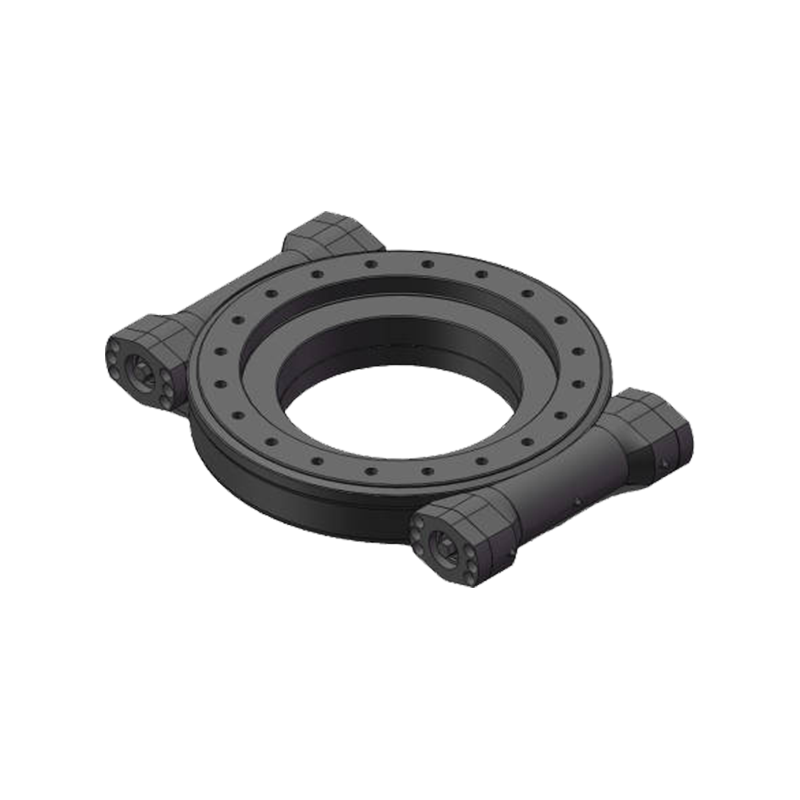How do horizontal slewing drives contribute to the efficiency of solar tracking systems and wind turbines?
 2025.03.14
2025.03.14
 Industry news
Industry news
Horizontal slewing drives play a critical role in the efficiency of solar tracking systems and wind turbines by enabling precise movement and rotation, which directly impacts their overall performance. Here's how they contribute to each:
1. Solar Tracking Systems
Horizontal slewing drives are often used in solar tracking systems, which adjust the position of solar panels to track the sun’s movement throughout the day. This maximizes energy capture and improves the efficiency of solar power generation. Here's how horizontal slewing drives contribute to solar tracking systems:
Precise Rotation: Horizontal slewing drives allow for smooth, accurate rotation of the solar panels, ensuring they can follow the sun’s trajectory in both horizontal and vertical planes. This maximizes sunlight exposure throughout the day, improving the overall efficiency of the solar panels.
High Torque Capacity: Solar tracking systems require drives with high torque to handle the weight of large solar panels and to adjust their position under varying wind conditions. Horizontal slewing drives provide the necessary torque without compromising precision, even in large, multi-panel systems.
Energy Efficiency: The use of slewing drives helps minimize energy consumption during tracking by providing a mechanism that efficiently handles the movement of panels with minimal power loss. As a result, they contribute to the overall energy-saving goals of the system.

Durability and Reliability: Horizontal slewing drives are built to withstand harsh environmental conditions (e.g., extreme temperatures, wind, and rain) that solar tracking systems often face. Their durability reduces maintenance needs, ensuring long-term reliability and cost-effectiveness.
2. Wind Turbines
In wind turbines, horizontal slewing drives are typically used in the yaw system, which adjusts the position of the turbine to face the wind direction for optimal energy capture. Here’s how they contribute to wind turbine efficiency:
Yawing Mechanism: Horizontal slewing drives provide the rotational movement needed for the yawing system to rotate the nacelle and turbine blades into the optimal wind direction. This alignment is crucial for maximizing wind energy capture by ensuring the blades face the wind for maximum efficiency.
High Load Capacity: Wind turbines are exposed to significant forces due to wind loads, and horizontal slewing drives can handle high axial and radial loads, ensuring the yaw system operates smoothly even in high winds. Their ability to manage these forces without compromising performance enhances the turbine's stability and efficiency.
Smooth and Continuous Operation: The continuous, smooth operation of the slewing drive ensures that the turbine can adjust its position to changes in wind direction without abrupt movements, reducing wear and tear on components. This contributes to the turbine's overall efficiency and lifespan.
Energy Efficiency: By enabling precise yawing and ensuring the turbine is always oriented to capture maximum wind energy, horizontal slewing drives directly contribute to the energy efficiency of the wind turbine. This, in turn, helps improve the energy output and operational cost-effectiveness of wind farms.
Long-Term Reliability: Wind turbines are often located in remote and harsh environments, so horizontal slewing drives are designed for longevity and low maintenance. Their ability to operate efficiently over time without frequent repairs or replacements helps reduce operational downtime, leading to higher efficiency in energy generation.












